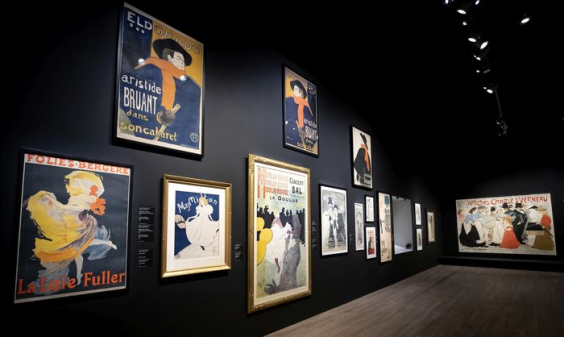From July 4 to Nov. 15, the Montreal Museum of Fine Arts (MMFA) is showcasing—in person—its most extensive exhibit on the post-impressionists yet, Paris in the Days of Post-Impressionism: Signac and the Indépendants. The exhibit boasts an impressive, sweeping collection of over 500 works from France’s leading post-impressionists, spanning Paris’ late 19th-century heyday to its final, tense years preceding the First World War.
The period was an artistic and culturally ripe one for the French capital, and the MMFA displays it unsparingly in all its messy efflorescence: Neo-impressionists, Fauvists, Symbolists, Nabis, Expressionists, Cubists, and just enough Picasso to brag about in the brochures. Most of the exhibit’s focus, however, is on Paul Signac, for both his pointillist paintings and his immense influence on French visual art during la belle époque. In 1884, he founded the Salon des Indépendants, an annual exhibition that catalyzed a generation of creative misfits until 1914, the start of World War I. Many of the paintings on display at the MMFA exhibit had their first glimmer of fame at the Salon.
Aside from Signac’s curatorial genius, his collection of paintings is the exhibit’s low point. Rainbow (Venice) is a decadent mess, melding garish, Candy Land-type colours with an ill-fitting, boxy-like pointillist style that looks eerily like a collection of Minecraft blocks. Here, Venice loses its medieval charm, and its gondolas and spires are transplanted in what looks like the Emerald City of Oz.
Throughout his collection of pastel pink-and-blue fantasies, Signac struggles to recreate the natural effervescence of, say, George Seurat’s pointillist masterpiece, A Sunday Afternoon on the Island of La Grande Jatte. Instead, most of his paintings come off as laboured and artificial, even gimmicky. Signac’s pointillist style encumbers, rather than enables, his creative visions.
Following the inconsistent selection of neo-impressionists, the early 20th century print collection is refreshing and distinct. A movement that fully utilized the era’s innovative print technologies and benefitted from the growing consumerist thirst, the Art Nouveau style completely freed itself from the shackles of the impressionist period. The posters’ bold black fonts and vivid primary colours are beautiful, even if they were only trying to sell you the latest dishwasher soap. While many of these prints are instantly recognizable and have been reprinted to near-ubiquity (Théophile Steinlen’s Le Chat Noir probably hangs in your roommate’s bedroom), it is exhilarating to see them in their proper historical context. The revolutionary ways in which these prints redefined the artistic world becomes immediately apparent at the exhibit.
Among the collection’s other non-oil-on-canvas works, Swiss printmaker Félix Vallotton is a true revelation. His black-and-white woodcuts are caricature-like in style, yet somehow radiate an emotional and energetic purity. In The Brawl, or Café Scene, one of his more detailed woodcuts, four tuxedo-clad men clash over a white table in a posh café as onlookers gawk; although the black of their suits overlap without demarcation lines, the men’s discombobulated shapes lose none of their intensity. Valloton’s austere textures and his characters’ raw emotions are fitting for the exhibit’s latter half: As the late 19th century’s debaucheries subsided, the grim thought of an incoming world conflict haunted artists’ psyches.
The MMFA’s lively post-impressionist exhibit is ill-fitting for these dark, pandemic-burdened times. But there is a joy—however escapist it may be—in physically visiting the museum, and embedding one’s self in the world of a long lost, more playful and innocent past.
Paris in the Days of Post-Impressionism: Signac and the Indépendants is on display at the Montreal Museum of Fine Arts until Nov. 15. For more information and ticket prices, visit their website.








